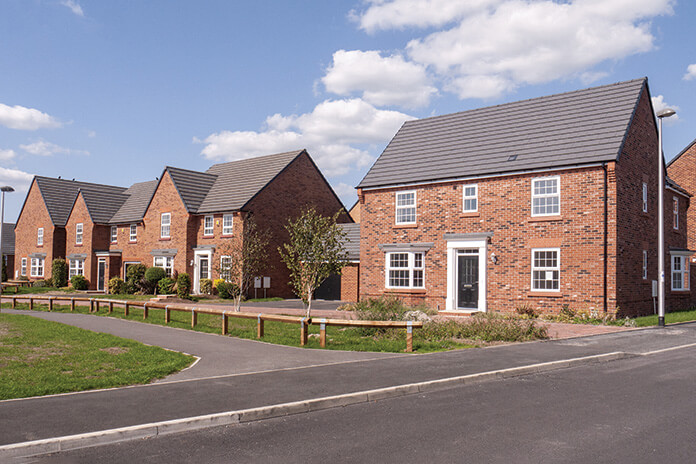Facebook ads – Part two
Property market still breaking records
November saw the highest rise in house prices in nearly six years – despite the rest of the economy suffering from various Covid-19 lockdowns.
This was the headline figure in the mortgage lender Nationwide’s latest House Price Index, published towards the end of November. It recorded the property rise as 6.5% year-on-year, bringing the average cost of property in England and Wales to £229,721 – that’s an increase of £14,000. The monthly jump from October to November was 0.9% (or £1,895).
Mortgage lending highest in 13 years
But it’s not only house valuations that are up; mortgage approvals are higher than they have been in 13 years too, according to the Bank of England. Their most recent figures, revealed at the end of October, showed that there were a total of 91,454 mortgage approvals in September – the highest since 2007.
This has astounded many economists who had predicted the surge in interest and applications would have declined by this point in the year. However, there is no doubt the extension of the furlough scheme, together with Chancellor Rishi Sunak’s July announcement of a Stamp Duty Holiday, has helped maintain the buying momentum. Very low interest rates are also having an effect.
One economist, Samuel Tombs, attributed much of the property market boom to: “A relatively narrow cohort of well-off households, who already own their homes with little debt.” He said they had then managed to augment their savings by working from home thus saving on commuting costs.
Tombs is referring to the trend to move from cities and town centres to areas offering more greenery, countryside and space. Families, in particular, were keen to “upsize” to homes with more bedrooms and a garden – properties that are inevitably further out in the suburbs or in villages.
This is reinforced by another Nationwide survey that showed almost one third of those questioned were thinking of moving because they wanted more outdoor space. Around one quarter of people said they found city life too noisy and fast. This has resulted in property within national park boundaries costing 20% more than similar sized properties outside park boundaries.
Could the Stamp Duty Holiday be extended?
In order to mitigate the gains made by the robust property market, Tombs said he could see the chancellor extending the Stamp Duty Holiday scheme beyond the end of March. He also suggested that another speculated mortgage guarantee scheme could have an equally positive effect on the property market.
The call for a Stamp Duty extension is gaining momentum amongst industry professionals. Certainly, it was echoed by Tom Scarborough, chief executive of Movewise. Referring to the fact there is a big backlog of house sales transactions still to go through, he said he was aware of “growing calls for the deadline to be extended”.
The Stamp Duty deadline panic has meant that both empty properties and those that aren’t in a chain have become very highly sought after by those buyers looking to move quickly and take advantage of the £15,000 saving for the first £500,000 of a property.
First-time buyers increasingly worse off
Meanwhile, first-time buyers are still being priced out of the market after finance lenders pulled 90% of low-deposit mortgage deals from the market. An increase in second-home ownership in villages and “greener” areas has also resulted in escalating house prices.
However, it may not all be doom and gloom for the younger generation looking to get on the property ladder. The buoyant housing market is having a positive effect on the construction sector, meaning more new builds are going up, which should help to rectify the shortage of supply. Of course, understandably this is also something that is attracting landlords keen to expand their existing property portfolios.
High street build-to-rent: Is it catering to tenant demand?

In October, John Lewis Partnership outlined its plans to expand its remit beyond retail to help generate new revenue streams as the high street continues to struggle. One of these avenues is investing in the build-to-rent (BTR) market. Its initial plans set out for 20 sites – with the first applications for builds in London being submitted in 2021.
As John Lewis targets sites either above or near to existing stores on the high street, data suggests renters are ditching city centre living in favour of homes in the suburbs and smaller towns. Which poses the question – is there really a case for BTR on the high street?
Remote working and green space
Around the same time John Lewis announced its plans, research from estate agents Hamptons International indicated a growing trend of renters moving out of London and looking to the suburbs. According to its findings, 63% of renters who moved to a bigger home chose to leave London to do so, with remote working and green space cited anecdotally as reasons why people wanted to move out of the city1.
And this trend isn’t just in London. Research also carried out by Hamptons found in September that villages and commuter towns were growing in popularity with 34% of renters demanding extra space in Q2, up from just 25% in the first three months of the year. The same research also found that the northwest came second on the list of areas where people were upsizing properties to get an extra room or a larger garden.
Some people may argue these trends will be short term. Influenced by the pandemic, we have all had to change the way we live and work, meaning we have new habits and new priorities. How long this continues post-pandemic only time will tell, but according to SpareRoom2, more than one in ten renters plan to leave London and never go back to city living after the pandemic.
When you add to this the appetite for remote working to continue after Covid-19, a YouGov poll3 found just 7% of respondents want to go back to the office. All the signs point towards the trend for renting in the suburbs and more rural areas becoming the norm.
The growing BTR market
It doesn’t come as a surprise that retailers are turning to BTR for new streams of revenue – after all, it’s a booming market. In Q3 of 2020, £1.43bn was invested in BTR with the overall value of the market now at £14bn4. For a developing market, it boasts impressive figures.
Councils, authorities and businesses are searching for solutions to resurrect the high street, but demand for inner-city rental properties is likely to be in tough competition with high-quality suburban BTR homes. In 2020, Wise Living has witnessed the demand first-hand for properties away from the hustle and bustle of populous city centres.
Even during the first lockdown, we launched the first of three schemes, The Old Brewery, located in the suburbs of Mansfield, Nottinghamshire, and it only took a matter of weeks before all the homes were snapped up – remotely. We have seen this on our other developments in Telford and Coventry, and we fully anticipate to see the same trend on the developments we are currently working on. These might only be a few examples, but they provide a real snapshot of the demand for quality, single-family rental homes in suburban areas.
The shift in demand from your “traditional” city centre blocks to suburban homes with gardens means more investors, developers and BTR providers are turning their attention to those areas, tapping into locations such as Wolverhampton, Rotherham and Boston. In the last 18 months, Wise Living has secured £60m of funding from ICG Longbow as well as a further £100m from Triple Point – indicating real appetite from investors, not just renters.
Future demand
No-one has a crystal ball to see exactly how demand might shift following the pandemic. Yet current rental trends show strong signs that city-centre living is on the back foot and moving out of the city for extra living space and access to green spaces with no need to live near the office is taking precedence.
As the high street continues to struggle it’s clear that different thinking is needed to help regenerate areas that have been such an important part of the way of life in the UK for so many years – whether BTR is the answer, it remains to be seen.
3 [w] https://www.insider.co.uk/news/uk-office-workers-want-continue-22979780






